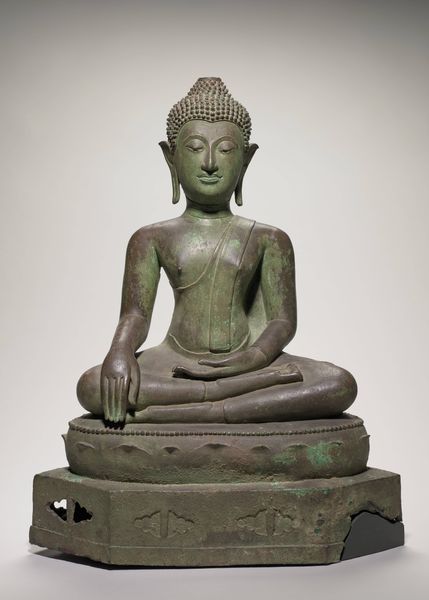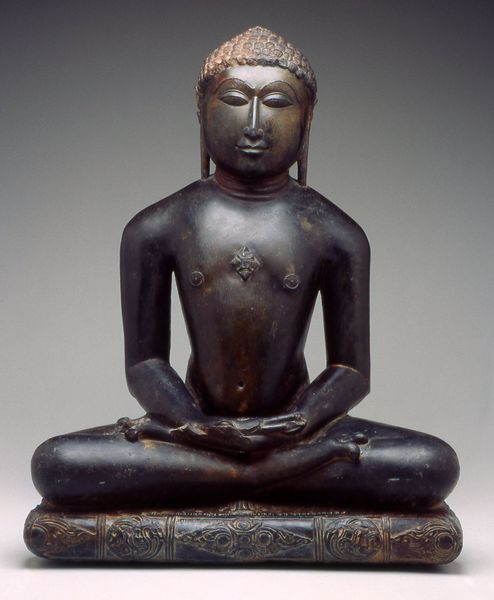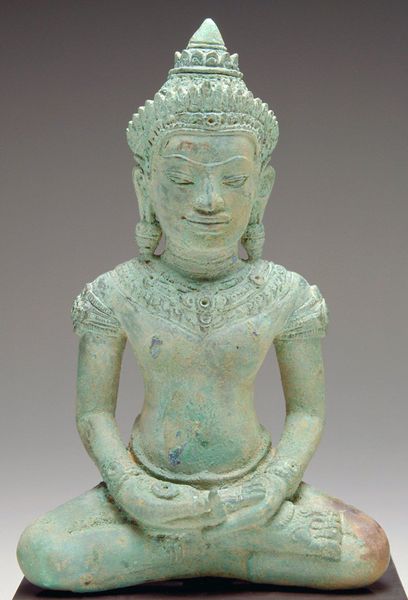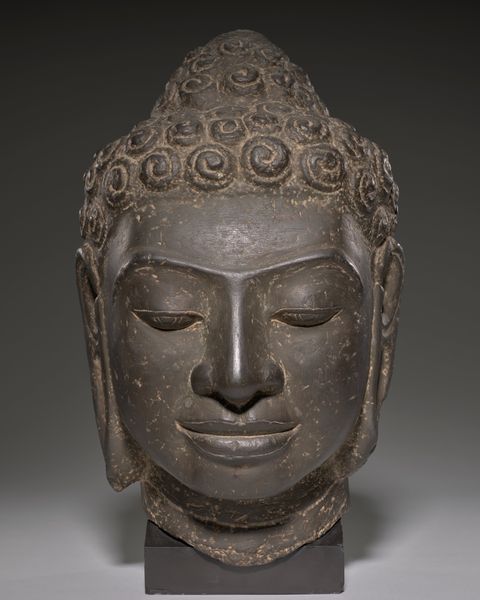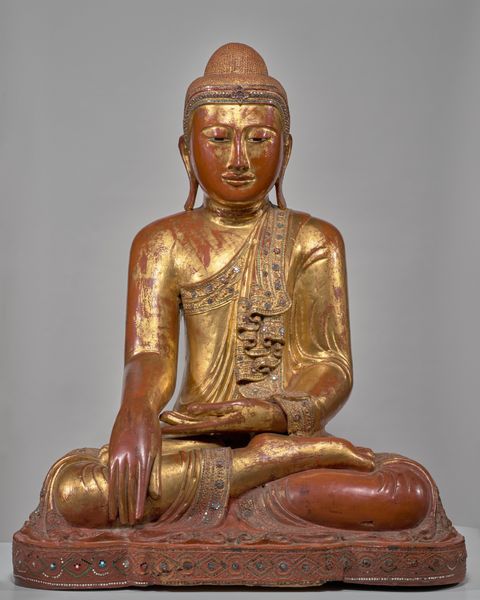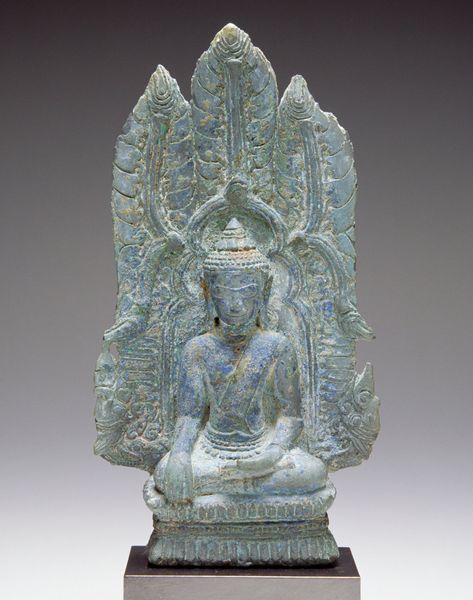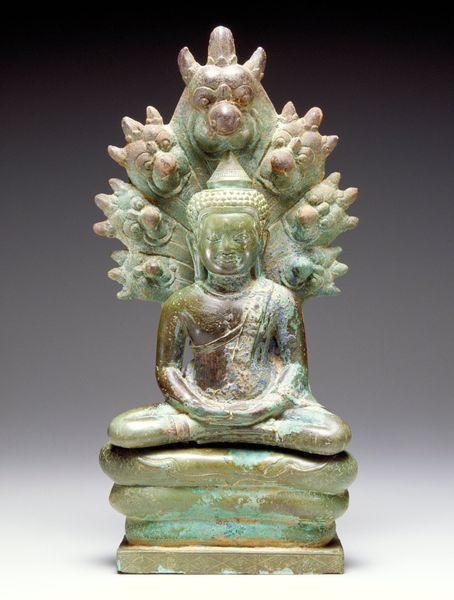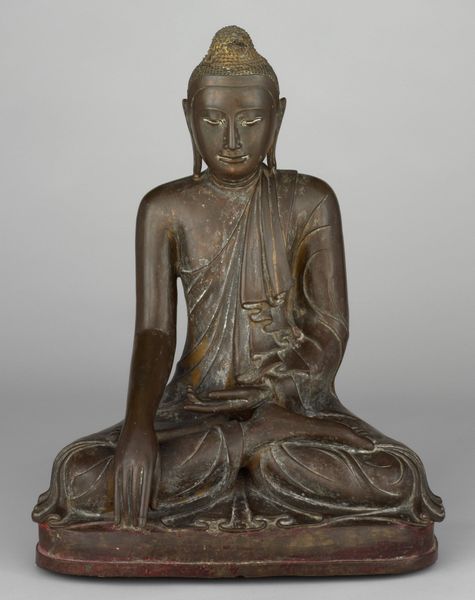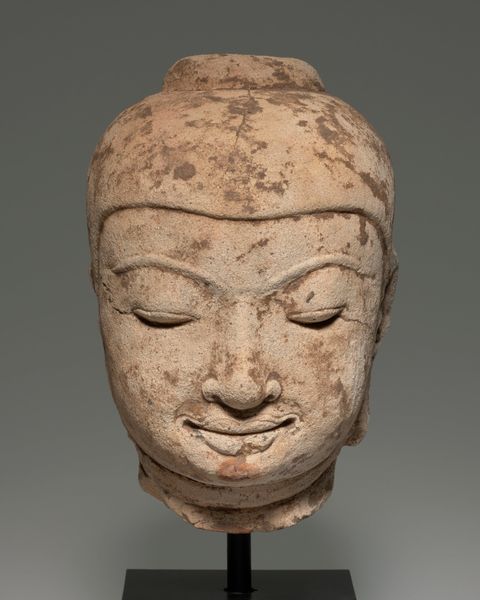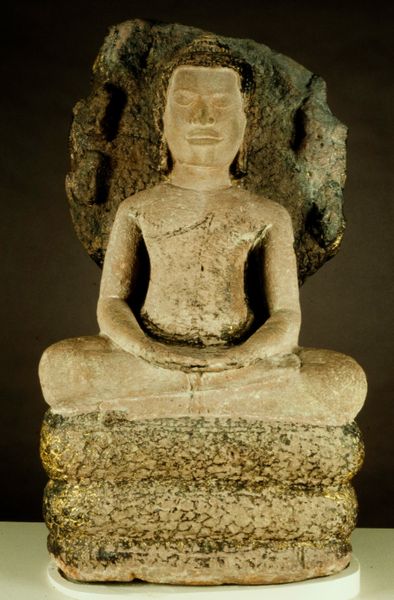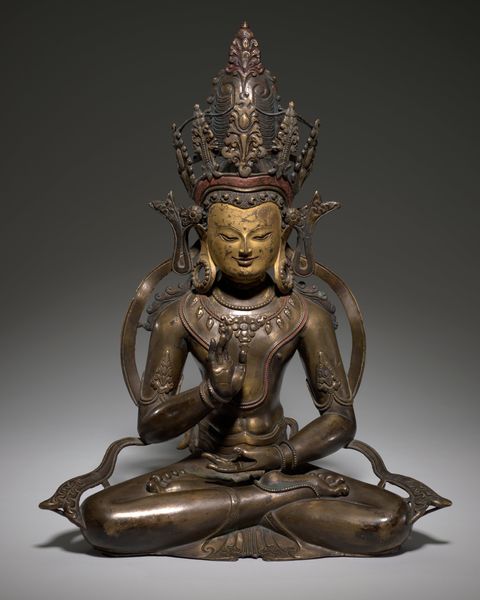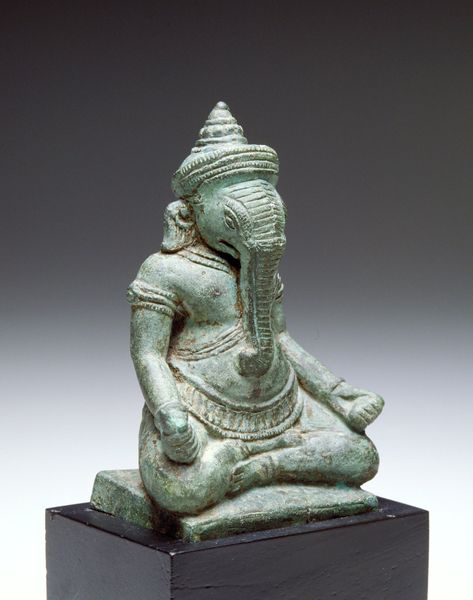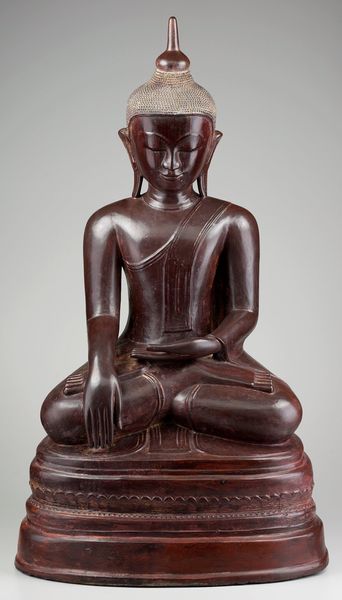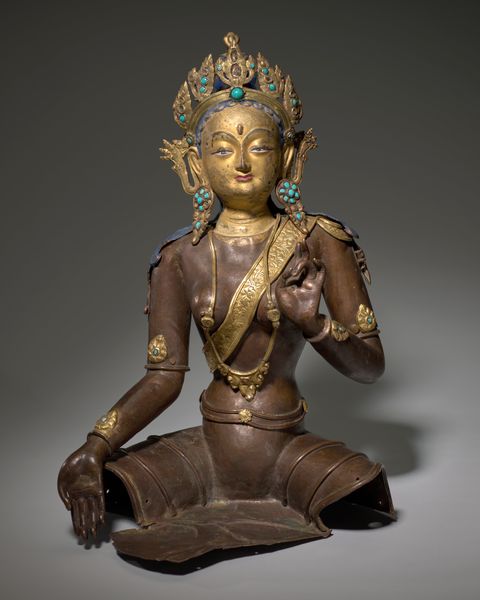
bronze, sculpture
#
sculpture
#
asian-art
#
bronze
#
sculpture
Dimensions: 7 1/8 x 3 1/8 x 1 7/16 in. (18.1 x 7.94 x 3.65 cm)
Copyright: Public Domain
Curator: Here we have a bronze sculpture titled "Seated preaching Buddha," crafted sometime between 601 and 900 during the Mon-Dvaravati period. Editor: It's smaller than I expected, given the significance. But it has an undeniable sense of calm and focus, a grounded stillness. It's visually very balanced. Curator: The figure embodies core Buddhist ideals. Notice the "abhaya mudra," the gesture of reassurance and protection with his right hand, set in contrast to the “vitarka mudra” expressing discourse, transmission, teaching in his left. His gentle smile conveys accessibility to all followers. Editor: This gesture of teaching also holds implications of historical power, doesn't it? During this time, royal authority in the region intertwined with Buddhist doctrine. It’s no coincidence these images gained prominence. The Buddha’s likeness served as a tool for consolidating religious and political order. Curator: Absolutely. The slightly elongated earlobes also symbolize his abandonment of princely wealth – the heavy jewelry he wore stretched them. His tightly curled hair, often interpreted as snails, is a further mark of his asceticism and enlightenment after enduring prolonged exposure to the sun, yet can be read more generally as auspicious signs of the Mahapurusha, the "great man." Editor: That is also precisely what lends power and privilege! Such markers of otherworldly distinction simultaneously make one wonder about issues of representation and power structures. How accessible was his message of renunciation actually intended to be, when expressed through these coded markers of an elite iconography? Curator: Indeed, decoding these signifiers opens up an essential understanding. The Dvaravati kingdom, in present day Thailand, left a strong Buddhist legacy reflected through images, belief systems and temple sites still studied to this day. Editor: Precisely so. And contemplating the sculpture’s legacy in our own era allows one to ask questions not just about art and religion but about social agency and cultural identity, then and now. The Buddha image continues to act on those looking back at it. Curator: Thank you for sharing these enriching insights! Considering the weight of this single sculpture, in relation to both devotion and history has made this image more vivid. Editor: Thank you, indeed. It has really opened my own eyes to how powerfully images carry stories and questions, spanning over time.
Comments
minneapolisinstituteofart almost 2 years ago
⋮
This upright seated Buddha demonstrates the mixing of Mon-Dvaravati style with the earliest pan-Asian conventions. The depiction has characteristically plump lips, described as bee-stung in Indian texts from about the 400s CE. Yet his wide mouth, flat nose, continuous eyebrows, and wide-set eyes are hallmarks of the style during this Thai kingdom (c. 600s–1000s). The Buddha’s right hand is in the gesture of exposition, or teaching, while the left is lowered to offer blessings. He sits relaxed in open-robe pose, with traditional attributes, such as distended earlobes (signifying the burdensome earrings of his former princely life), three beauty marks on the neck, a cranial protuberance, and hair in snail-shell curls. The slightly parted lips and raised corners of his mouth evoke other qualities, such as a sweet and resonant voice.
Join the conversation
Join millions of artists and users on Artera today and experience the ultimate creative platform.
